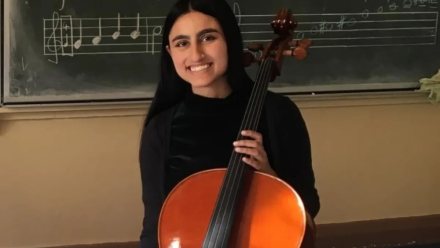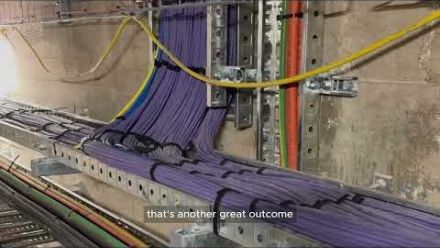Making history with a Victorian bushfire community
On the morning of 7 February 2009, after a protracted drought and weeks of record temperatures, the state of Victoria faced extreme fire danger warnings.
The Victorian Premier made public announcements, the Country Fire Authority prepared to enact a disaster plan and residents of fire prone regions were asked to consider their 'leave early or stay and defend' options. By that evening Victoria's nightmare had been realised. The worst bushfires in the nation's history had swept through 4,500 square kilometres of land, claiming 173 lives, injuring 5,000 people, killing countless animals and destroying 2,029 homes. Black Saturday had been burnt into Australia's history.
Immediately after the fires, in partnership with the National Museum of Australia, Tom Griffiths, a Professor of History at ANU, established a collaborative community fire history project to help residents deal with the trauma they had experienced. Professor Griffiths speaks about how the project started, the importance of capturing the emotional history of an event and why he decided to donate to the project.
How did you become involved with the Steels Creek community?
In the aftermath of Black Saturday, many residents of Steels Creek-a small community in the Yarra Valley-felt that they needed to make sense of the event that had engulfed them, and they turned to historians for help. They had lost 11 residents and some 60 homes in the fire, and they found themselves haunted by three vital questions: What happened on the day of the tragedy? How will they recover and re-invent their futures? What does it mean to live with fire? They invited me to work with them in exploring those issues. I have been joined in this research by Dr Peter Stanley from the National Museum of Australia, Dr Christine Hansen, a doctoral graduate in history from ANU, and Moira Fahy, an award-winning film producer.
Why is it important to capture the emotional history of an event?
Fatal bushfires leave a legacy of trauma and create a hunger for meaning. People constantly ask 'why?' They want to understand how their own experiences fit into a bigger pattern. When we started to work with the community, they said that they did not want any more hugs or soft toys; what they needed were true stories about what they had gone through. Communities recovering from disaster need not only food, shelter and infrastructure; they also need a sense of identity, continuity and hope.
Where is the project up to now?
The three questions posed by the community have guided our research. The first question - about the experience of the tragic day itself-will be the subject of a book called Black Saturday at Steels Creek: Fire and an Australian Community by Peter Stanley, to be published in 2012. Based on about 70 interviews and intensive local research, it provides a case study of how people in an Australian bush community responded to such a crisis. The second question-about grief and recovery-is being explored in a 60 minute educational DVD produced by Moira Fahy that captures, over a period of two years, the experience of three families as they rebuild their lives. Moira is the writer and director of the award winning ABC online documentary Black Friday. The third question-about living with fire-is addressed in a book called Living with Fire written by Christine Hansen and myself in collaboration with Steels Creek residents. It analyses the deeper local history of people, place and fire in that corner of the Yarra Valley and will be published in 2012.
You received the 2009 Alfred Deakin Essay Prize for your essay 'We have still not lived long enough', and then donated the $15,000 prize to this project. Why do you think it is important to give back?
The award recognised a shocking and humbling event that shadowed the life of Victorians, indeed all Australians. Black Saturday appalled us and challenged us to the core, and we are still coming to terms with it, not only for the way it took and changed lives but also for what it means for our relationship to the bush. I wanted the prize-money to help bushfire survivors to tell their stories collaboratively and with historical perspective-and to strengthen our understanding of a phenomenon that, one day, will return.
How else has the project been supported?
The David Thomas Foundation matched an investment of $20,000 by the University. I'm grateful for the support from ANU and from the Thomas Foundation. It is a wonderful example of a university and a private foundation assisting timely historical research that has immediate benefits for people affected by the bushfires.The project has received additional funding and support from the Sidney Myer Fund, the Victorian Bushfire Reconstruction and Recovery Authority and the Office of the Emergency Services Commissioner, Victoria.
To support the recovery project please call us on +61 2 6125 9055.


